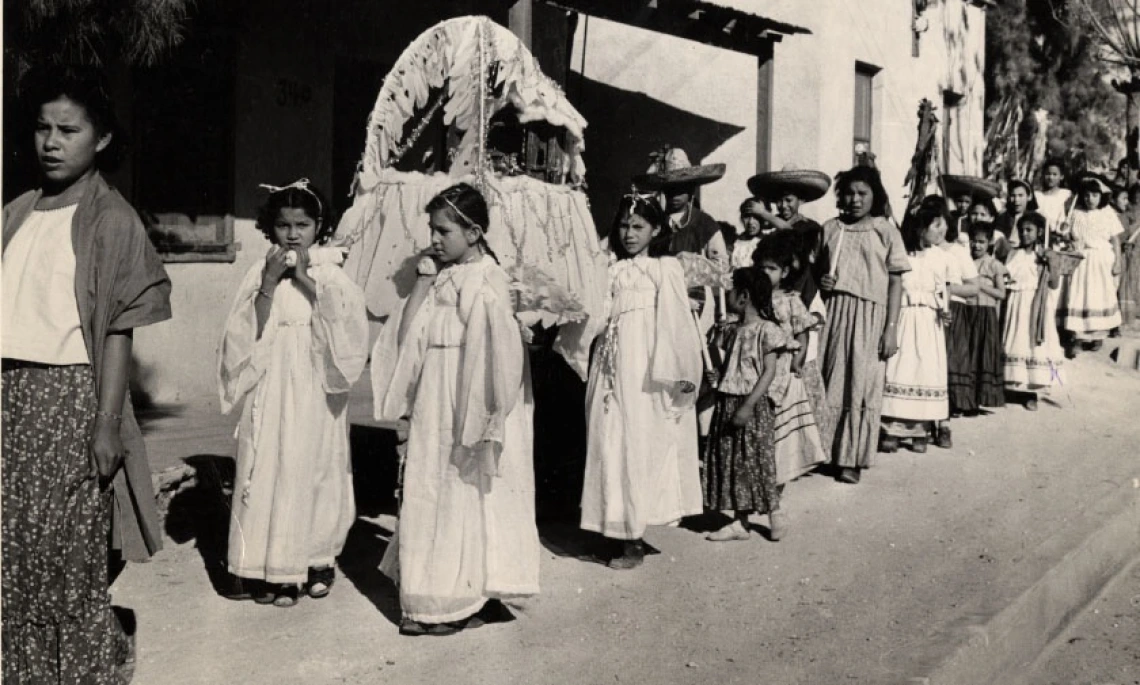Las Posadas collection

Children of the Mexican Folklore Club reenacting Las Posadas procession, 1959; box 1, folder 1.
Collection area: Arizona and Southwest
Collection dates: 1943-2007 bulk (bulk 1981-2007)
The collection (1943-2007, bulk 1981-2007), contains materials documenting the history of Carrillo Elementary School’s Las Posadas procession in Tucson, Arizona. It includes childrens’ artwork and writing, invitations, programs, event history, correspondence, photographs, publications, newspaper clippings related to the event, music books, song lyrics, class lists of participating students, colored slides and CD’s of Carrillo children performances, and a custom designed event t-shirt.
In 1937, Miss Marguerite Collier, a teacher at Carrillo Elementary School initiated the enactment of “Las Posadas” as a way to build pride amongst her Hispanic students. It has since then been her legacy to the school and the community, as the procession of costumed children singing Nativity songs has continued for over 75 years. Despite its controversial religious nature, the school has been able to continue the celebration making it an after school activity and not using school district funding. Important community collaboration has been incorporated throughout the years and has gained sponsorship from organizations such as the Tucson Festival Society and the DeGrazia Art & Cultural Foundation.
Throughout the years the procession has been held in the evenings in the historic Barrio El Hoyo where the school is located, and has included dramatization, caroling, and food, all organized by the school’s staff, students and community collaborators. The enactment consists of students dressing up as Mexican farmers and winged angels, and walking door-to-door asking for shelter or
A collection guide explains what's in a collection. New to using our collections? Learn how to use a collection guide.
Collection guideAccess this collection
Visit us in person to access materials from this collection. Our materials are one-of-a-kind and require special care, so they can’t be checked out or taken home.
How to cite
Learn how to cite and use materials from Special Collections in your research.
